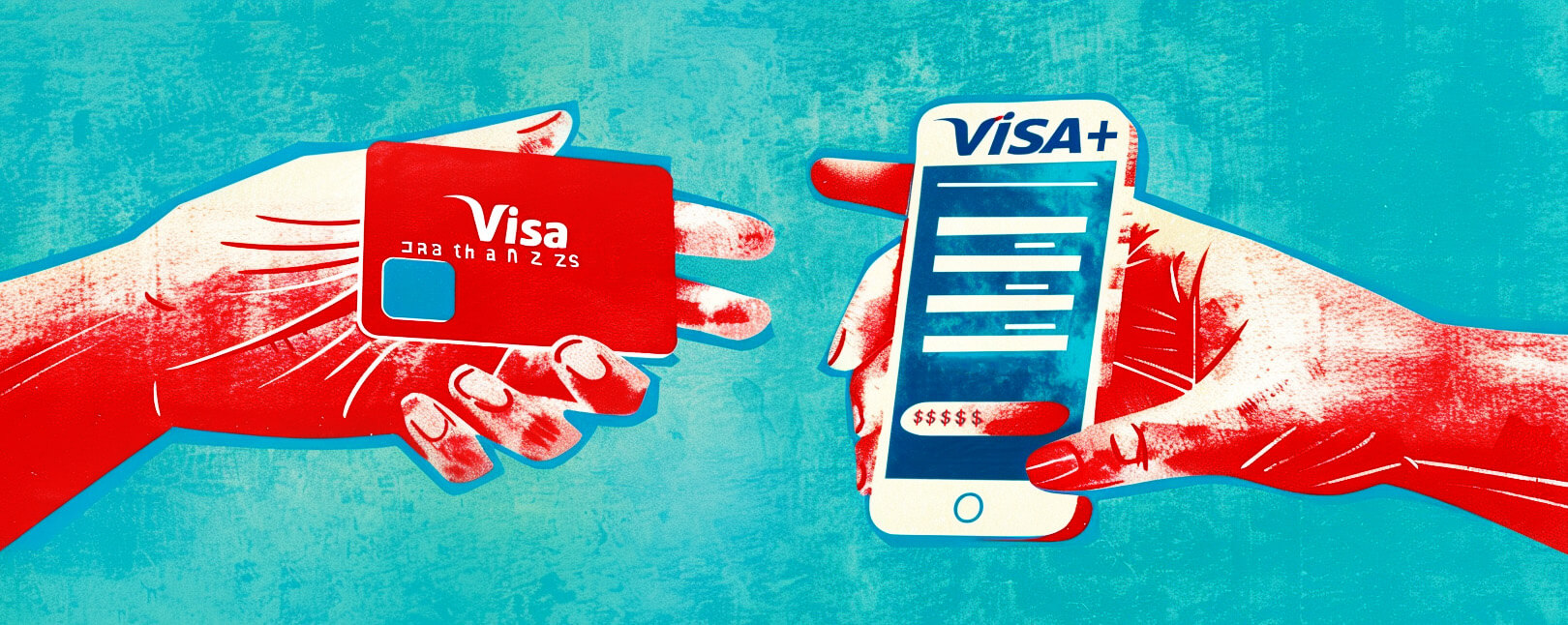What are Stored-Value Cards? How are They Different From Other Prepaid Cards & What Best Practices Should Savvy Merchants & Consumers Adopt?
Stored-value cards (SVCs) are a widely accessible financial tool that offers convenience, security, and flexibility to a broad spectrum of consumers. SVCs are a very popular payment method; the global prepaid card market is projected to surge to an astounding $5.3 trillion by 2027.
Merchants stand to benefit from this SVC boom. Stored-value cards open up opportunities for business growth, customer satisfaction, and effortless, secure transactions at the point of sale.
Custom-branded cards are also known to stimulate repeat purchases. As many as three-quarters of consumers who use a gift card at a store will ultimately spend more than the value of that gift card.
All of that sounds great. However, does it necessarily follow that SVCs are a good fit for every business or customer? Let’s get into it.
Recommended reading
- How to Use a Contactless ATM & Where to Find Enabled Devices
- Terminal ID Number (TID): What is it? What Does it Do?
- What is EMV Bypass Cloning? Are Chip Cards Still Secure?
- Dispute Apple Pay Transaction: How Does The Process Work?
- Visa+: Get the Most Out of Digital Wallets With This Tool
- Mastercard Installments: How Mastercard BNPL Works
What are Stored-Value Cards?
- Stored-Value Cards
Stored-value cards are payment cards that have monetary value tied directly to the card, rather than being linked to an external account with a financial institution. This includes subway metro cards, for instance, as well as many retailer-issued gift cards.
[noun]/stord • va • lyoo • kard/Stored-value cards are very different from other payment options like debit and credit cards. With debit cards, the money is deposited into an account, which is maintained by the card issuer. Credit cards come with predetermined lines of credit offered to the cardholder by the issuer.
Stored-value cards, on the other hand, function more like prepaid money cards. They might be anonymous, especially in the case of gift cards, unlike debit and credit cards which are usually issued in the name of individual account holders.
Another distinguishing feature of stored-value cards is their lifecycle. Once the value on the card is used up, the card value can be topped up; imagine reloading a fare card for public transport. Otherwise, the card can simply be thrown away.
Common Uses for Stored-Value Cards
There are numerous applications for organization-specific or industry-specific stored-value cards.
Consider department stores that issue their own branded gift cards. Or, university students that use prepaid cards across campus. Whether it's in the cafeteria, the bookstore, the library, or even at soda machines, single-purpose cards offer convenience and simplicity with no fees attached.
However, we're also seeing the rise of multi-purpose cards. These cards can accept direct deposits, allow cash withdrawals at ATMs, facilitate retail purchases, bill payments, and money transfers (usually for an added fee).
When branded by one of the card networks, a stored-value card can be used wherever that card brand is accepted. Industry estimates suggest there are about 7 million Visa or Mastercard-branded SVCs out there at any given time.
It's also worth noting that stored-value cards can offer significant savings for organizations. Merchants pay interchange and other fees every time a customer makes a credit or debit card purchase. But, if customers load a large sum onto the card initially, then make smaller purchases over time, the merchant can avoid those per-swipe fees and pay lower transaction fees in the long run.
“Closed” vs. “Open” Stored-Value Cards
Stored-value cards can be classified into two main categories: closed-loop and open-loop.
Closed-loop cards have a specific usage. For example, they can only be used for the issuer's products, or within a limited scope. Think of a Starbucks card; it's great for your coffee fix, but you can't use it at a grocery store. Whether these cards can be reloaded depends on the issuer and the specific type of card. They don't typically allow direct deposits, and there's no risk of overdraft.
On the other hand, open-loop cards offer more versatility. They can either be unbranded or branded with a bank association's logo, such as Visa, MasterCard, or even Discover. These cards are like a universal key, allowing you to make purchases or pay bills virtually anywhere the brand is accepted.
| Closed Loop | Unbranded Open Loop | Branded Open Loop | |
| Point-of-sale Transactions | Yes. Within the issuer's network | Yes. With available PIN keypads or ATMs | Yes. Anywhere that accepts Visa, MasterCard, American Express, or Discover |
| Reloadable | Depends on the issuer and type of card | Depends on the issuer and type of card | Depends on the issuer and type of card |
| Direct deposit | No | Yes. Depends on setup | Yes. Depends on setup |
| Risk of overdraft | No | No | Depends on reconciliation |
What About “Branded” & “Unbranded” Cards?
As we mentioned above, open-loop cards can be further subdivided into “branded” and “unbranded” cards.
Unbranded Cards
Can be used anywhere with a PIN keypad, making them a good fit for point-of-sale transactions and ATM withdrawals. They work with PIN-based technologies and are often seen in places like grocery stores and public benefit cards.Branded Cards
Carry the Visa, MasterCard, Discover, or American Express logo. They use signature-based technologies and are accepted virtually everywhere that accepts the relevant brand. This means you can use them at retailers, restaurants, auto-repair shops, online retailers, etc.Both branded and unbranded open-loop cards may be reloadable and can accept direct deposits, depending on the issuer's set-up. There's a slight risk of overdraft, depending on how the account is reconciled. So, as a merchant, understanding these distinctions can help you make the best choices for your business and customers.
How Stored-Value Cards are Regulated
The last decade saw rapid expansion and diversification of the uses of stored-value cards. This has prompted regulatory agencies to question if these should be treated as deposit accounts concerning insurance and consumer regulation coverage.
Stored-value cards operate at the issuer level, though, often with the underlying funds commingled instead of held in individual accounts. This would make it very difficult to regulate these cards like conventional credit or debit cards. That said, several key regulations already govern the use of stored-value cards:
#1 | Regulation D — Reserve Requirements of Depository Institutions
This Federal Reserve Board regulation sets uniform reserve requirements for depository institutions. Regulation D applies if a stored-value or other electronic money product is considered a demand deposit or transaction account.
#2 | Regulation E — Electronic Funds Transfer Act
Another Federal Reserve Board regulation, this enforces The Electronic Funds Transfer Act, providing protections for consumers using electronic funds transfer (EFT) systems. It applies to transactions involving stored-value products when the transaction accesses a consumer's account.
Employers can set up payroll card accounts for employees managed by the employer, a third-party processor, a financial institution, or another entity. Financial institutions aren't required to provide periodic statements for these accounts as long as they offer a phone number to check the account balance, a website to view a 60-day transaction history and provide a written transaction history for the preceding 60 days upon request.
#3 | Regulation BB — Community Reinvestment Act
This regulation encourages financial institutions to meet their entire community's credit needs, including low- and moderate-income neighborhoods. Payroll cards that are free or low cost, and improve financial services access for low or moderate-income individuals, could qualify for credit under The Community Reinvestment Act.
#4 | Regulation DD — Truth in Savings Act
This regulation implements The Truth in Savings Act to help consumers compare deposit accounts, primarily through fee disclosure, annual percentage yield, interest rate, and other account terms. Payroll cards that operate similarly to courtesy pay or bounce-proof checking accounts are covered by this regulation.
Stored-value cards, while subject to the Electronic Funds Transfer Act (EFTA), don't qualify for chargebacks on purchases. Chargeback protections are reserved exclusively for credit and debit purchases. However, the initial transaction with which the stored-value card itself was purchased might be subject to a chargeback, if it was conducted with a credit or debit card.
This regulatory landscape underscores the importance of understanding the rules when considering stored-value cards for your business.

Fees Tied to Stored-Value Cards
Stored-value cards, and open-loop cards in particular, offer a lot of convenience and flexibility. However, they often come with fees that may prove burdensome to consumers.
While loading money onto the card or checking the balance online is typically free, the fees begin to accrue once customers start to use their money. Activation or set-up fees can range from $5.95 to a whopping $140.
Additionally, maintenance fees vary widely, from $0 if a minimum balance is maintained or if the customer brings in 10 or more referrals, to as high as $99. Each purchase may attract a convenience fee of $1 to $2, and withdrawing cash from an ATM can cost between $1.50 and $3.75. Even simple actions like checking the card balance at an ATM or speaking with a customer service representative can add $1 each to the costs.
Fees are generalized and could be higher or lower, depending on the card issuer’s terms and conditions. That said, some fees commonly assessed in connection with SVCs include:
| Utility | General Fees |
| Card Issuance | $1.00-$9.95 |
| Card Reload | Free-$5.95 |
| Card Re-Issuance | $1.00-$9.95 |
| Monthly Maintenance | Free-$3.00 |
| IRVU | $0.50-$1.00 |
| ATM | Free-$2.00 |
| Bill Payment | $0.50-$1.50 per transaction |
| Dormancy fee | $5.00-$15.00 |
| Activity statement | $10.00-$25.00 |
The costs can mount with fees for additional cards, replacing lost or stolen cards, bounced checks, and overdrafts. It's easy for a customer to lose track of their balance and subsequently face an overdraft fee of $29.
There are also numerous potential charges to anticipate, such as transaction limit fees, bill payment fees, phone or online transaction fees, reload fees, money transfer fees, out-of-network domestic and international ATM transaction fees, inactivity fees, overdraft protection fees, payday advance fees, credit-reporting fees, and dispute fees.
It's worth noting that some transactions might even incur dual fees. For instance, if the card remains unused for a certain period, say 90 days, an inactivity fee is charged on top of the regular monthly maintenance fee. Depending on the specific ATM used, the ATM provider may also levy additional charges on top of the fees listed by the card provider.
Why Do Consumers Use Stored-Value Cards?
Despite the added fees, stored-value cards offer a mix of benefits that could suit various individual needs and circumstances. Here are just a few reasons why many customers love SVCs:
Despite the considerable benefits that stored-value cards offer, it's important for consumers to do their homework before committing to one. Different cards come with different terms and fees, and understanding these details upfront can prevent unwelcome surprises down the line.
Shoppers should weigh the convenience and advantages against any associated costs to ensure they're making a decision that best suits their individual financial circumstances.
10 SVC Best Practices for Merchants
As a merchant, exploring new avenues to reach potential customers or enhance services for existing ones can positively impact one’s bottom line. When developing a stored-value card program, it's essential to consider the provision of disclosures, notices, periodic statements, and error resolution procedures. After all, being as transparent as possible about the potential benefits and pitfalls SVCs might pose for customers is always a good idea.
Beyond this, implementing the following best practices can ensure a smooth and successful experience for all parties involved:
#1 | Research the SVC Market
Conduct a comprehensive market analysis to determine the potential card volume, card load potential, and anticipated frequency of use. Merchants should also perform a break-even analysis to understand the frequency of card usage needed to cover the costs associated with the program. Finally, look at potential float volume, which is the amount of money held on the cards between the time they're loaded and when they're spent.
#2 | Research SVC Providers
Thoroughly research stored-value card providers, focusing on factors such as reputation, fees, customization options, and the level of support they offer. Choose a provider that aligns with the business’s needs and objectives.
#3 | Evaluate SVC Costs
Understand the costs associated with offering stored-value cards, including setup fees, transaction fees, and any ongoing maintenance costs. Make sure that the fees align with the business’s budget and expected ROI.
#4 | Understand Legal & Regulatory Requirements
Merchants should become familiar with the legal and regulatory requirements for stored-value cards in their jurisdiction. This includes compliance with financial regulations, consumer protection laws, and data privacy standards.
#5 | Establish Clear Terms & Conditions
Develop clear and transparent terms and conditions for stored-value cards. This should cover aspects such as card expiration, fees, and any limitations on usage.
#6 | Standardize Training
Ensure that staff is well trained in the use and management of stored-value cards. This includes understanding the card issuance process, assisting customers with inquiries, and troubleshooting any issues that may arise.
#7 | Develop a Marketing Strategy
Create a marketing strategy to promote stored-value cards, incorporating both online and offline channels. This can include social media advertising, in-store promotions, and targeted email campaigns.
#8 | Integrate SVCs with POS Systems
Make sure stored-value cards are seamlessly integrated with the company’s point-of-sale (POS) system. This will enable smooth transactions and accurate tracking of card balances and usage.
#9 | Monitor & Analyze SVC Usage Data
Regularly review and analyze stored-value card usage data to gain insights into customer preferences and behaviors. Use this information to refine the marketing strategy, identify potential areas for growth, and improve overall customer experiences.
#10 | Gather Customer Feedback
Actively solicit customer feedback on experiences with stored-value cards. This will help identify any potential issues or areas for improvement and ensure that the business continues to meet the needs and expectations of customers.By implementing these best practices, merchants can make an informed decision about offering stored-value cards and create a program that benefits both their business and their customers.
FAQs
What are some examples of stored value cards?
There are numerous applications for organization-specific or industry-specific prepaid cards. These can include payroll cards, rebate cards, gift cards, cafeteria cards, travel cards, and health scheme cards like those used in U.S.-based Health Savings Accounts (HSAs). The U.S. military uses cards like EZpay, EagleCash, and Navy Cash as electronic cash alternatives in areas with limited banking or telecommunication infrastructure.
What is meant by stored value cards?
Stored-value cards are payment cards that have monetary value directly stored on them rather than being linked to an external account with a financial institution. Picture your subway metro card or a calling card, for instance. Retailer-issued gift cards are also a great example of this type of card.
What is the difference between a stored value card and a debit card?
Stored-value cards are a little different from other types of cards you may be familiar with, like debit and credit cards. With debit cards, the money is deposited with the card issuer, and credit cards come with credit limits set by the issuer and are connected to accounts at financial institutions. With a stored-value card, the balance is tied directly to the card itself.
Is a credit card a stored-value card?
No. Stored-value cards function more like prepaid money cards. They might be anonymous, especially in the case of gift cards, unlike debit and credit cards which are usually issued in the name of individual account holders.
Do stored value cards work the same as a credit card?
As far as cardholders are concerned, yes. When branded with a bankcard logo, they can be used wherever that bankcard is accepted. Any difference in procedure occurs on the backend, invisible to customers.













